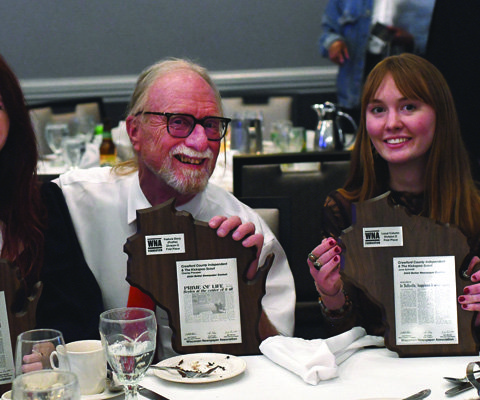WISCONSIN - The level of concern and attention being devoted by the State of Wisconsin to research topics related to the spread of chronic wasting disease (CWD) has been ramped up dramatically in 2019. Researchers from the DNR, and UW-Stevens Point and UW-Madison, and the US-Geological Survey National Wildlife Health Center are collaborating on a variety of different research topics related to CWD.
Composting and soil
Perhaps the most exciting, cutting edge research around CWD is happening up at a decommissioned deer farm in Portage County. The study, being undertaken by UW-Stevens Point Soil & Waste Resources Department in collaboration with DNR and UW-Madison will investigate whether the prions that spread CWD can be deactivated by composting.
“DNR has found that some landfills prefer not to take deer carcasses because of the threat of CWD,” DNR Deer & Elk Research Scientist Dan Storm explained. “This means that in some areas it will be more likely that deer carcasses will be left to decompose on the landscape, which means that the threat to healthy deer could be increased.”
The ‘Almond Farm,’ formerly known as ‘Buckhorn Flats,’ was shut down by the DNR in 2002 after it was discovered that 80 percent of the deer at the facility were infected with CWD. The DNR purchased the property in 2011 to ensure that the double fence around the property would remain intact to prevent wild deer from accessing the property.
In the study, CWD infected deer carcasses will undergo a controlled and monitored composting process contained within tubs. Leachate resulting from the composting process will be tested for CWD. The project is intended to address concerns that local municipalities have with accepting infected carcasses. The study is intended to yield best management practices for carcass disposal.
“Each box will be eight feet wide by 16 feet long and four feet high,” Storm explained. “They will be open on the top, with two deer per box, and the deer will be covered by several feet of sawdust.”
Storm explained that temperature alone is not enough to destroy prions. So what this study will add into the mix is the microbiological activity provided by the composting process. The scientists hope to demonstrate that composting may weaken or destroy the prions. What is important in the study will be the completeness of the composting process.
“This research is building on research done five years ago in Canada, but taking it further,” Storm explained. “If we can prove that composting destroys the prions then it would make it easier to get a landfill to accept the composted waste.”
Because the facility has been undisturbed for so long, analysis of the prion activity in the soil over the long term will also be undertaken. What researchers are hoping to learn, since the property has been free of deer for so long, is if prions are still detectable in the soil and if, so, if they are still infectious.
Forecasting project
The CWD Forecasting Project is dedicated to investigating the role of various risk factors in the growth and spread of CWD. In specific, the researchers from DNR will look at the long-term role of various risk factors such as sex, age, soil type and land cover in the growth and spread of the disease. This analysis will be used to forecast growth and spread of the disease to optimize monitoring.
This research will be combined with results from the Southwest Wisconsin CWD Deer and Predator Study on impacts to local deer populations. It will help with forecasting spread and when population-level impacts on deer can be expected.
This project is a colloaboration between DNR, the US-Geological Survey National Wildlife Health Center and UW-Madison.
Deer and predator study
January of 2016 marked the beginning of the largest and most comprehensive deer research project ever undertaken in Wisconsin: The Southwest Wisconsin CWD Deer and Predator Study. The overall research goal is to comprehensively examine factors that could influence a deer population change.
Researchers have worked with volunteers and landowners to collar deer, coyotes and bobcats, and then release them back into the wild for monitoring. The collaring is expected to last through 2020, and animals will be followed for several years.
The study is principally concerned with the potential for CWD to negatively impact deer populations. Researchers are exploring the infection rates at which the disease reduces deer survival and reproduction enough to reduce deer populations.
Because other factors can also influence deer populations, including hunting, predation and habitat quality, researchers will track these factors closely as well.
Prion detection
A study being undertaken by DNR, along with UW-Madison and USGS National Wildlife Health Center, will research next generation prion detection methods. These new tests will be compared with the testing methods currently in use.
“This research could lead to less invasive and more sensitive ante-moretem (before death) CWD testing as well as post-mortem (after death) testing of more easily accessible body tissues and/or fluids. This has potential to drive down the cost of testing, and provide a quicker turn around for test results.
The project will determine how prion sources differ in their infectivity. It will also help to improve the understanding of the potential for environmental transmission of CWD.





